Variation in visitation patterns and habitat use of adult and juvenile Mobula alfredi (reef manta rays) at key aggregation sites in Raa Atoll, Maldives
2022
Annabel Jane Kemp (MSc Marine Environmental Management - University of Exeter)
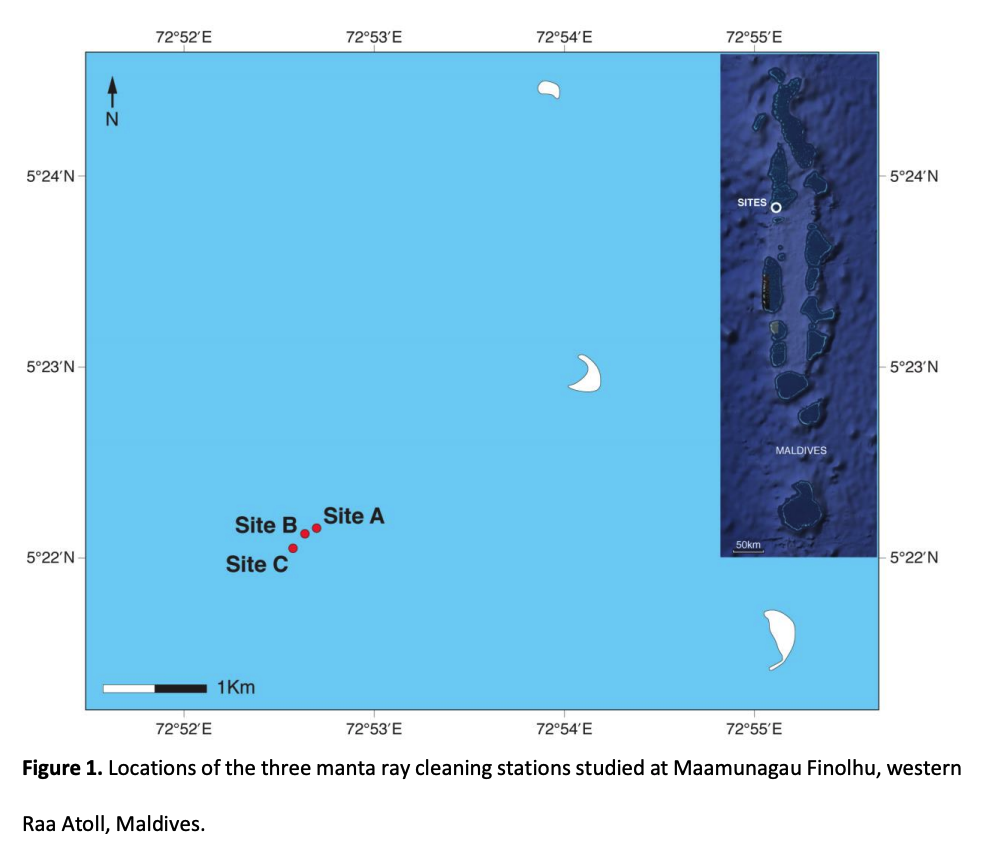
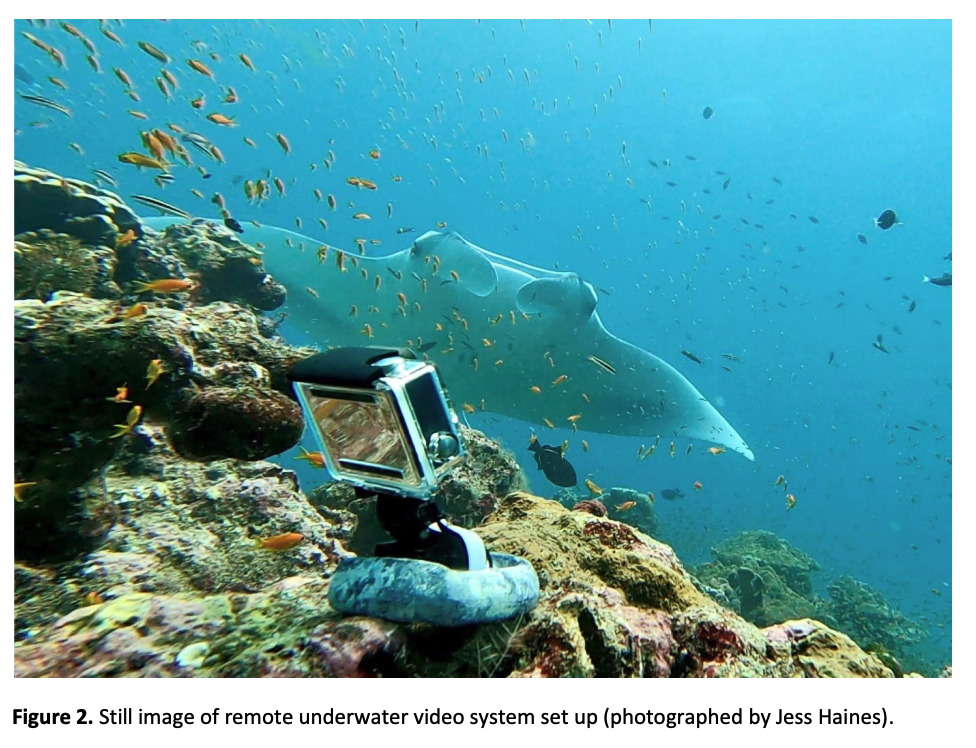
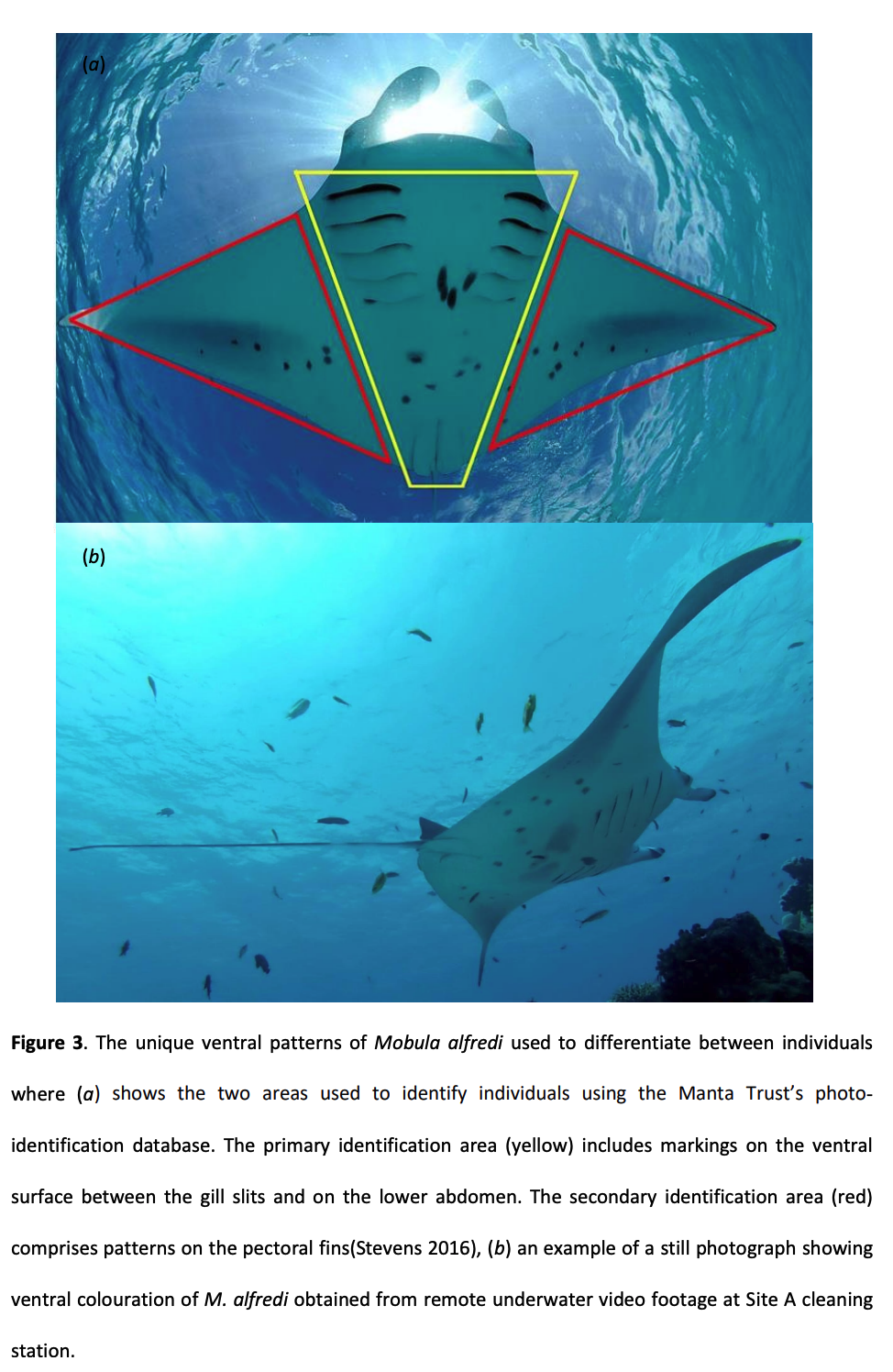
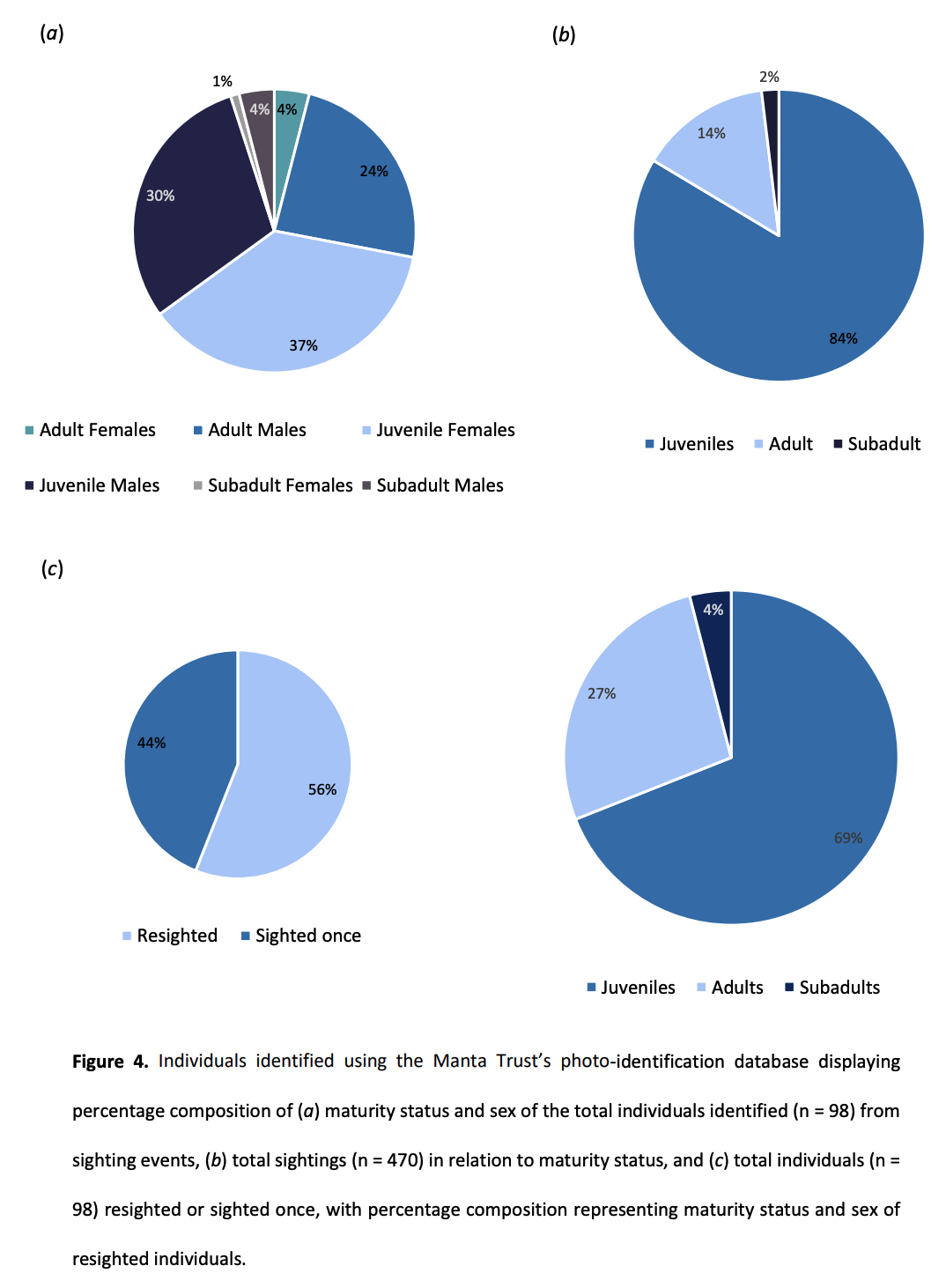
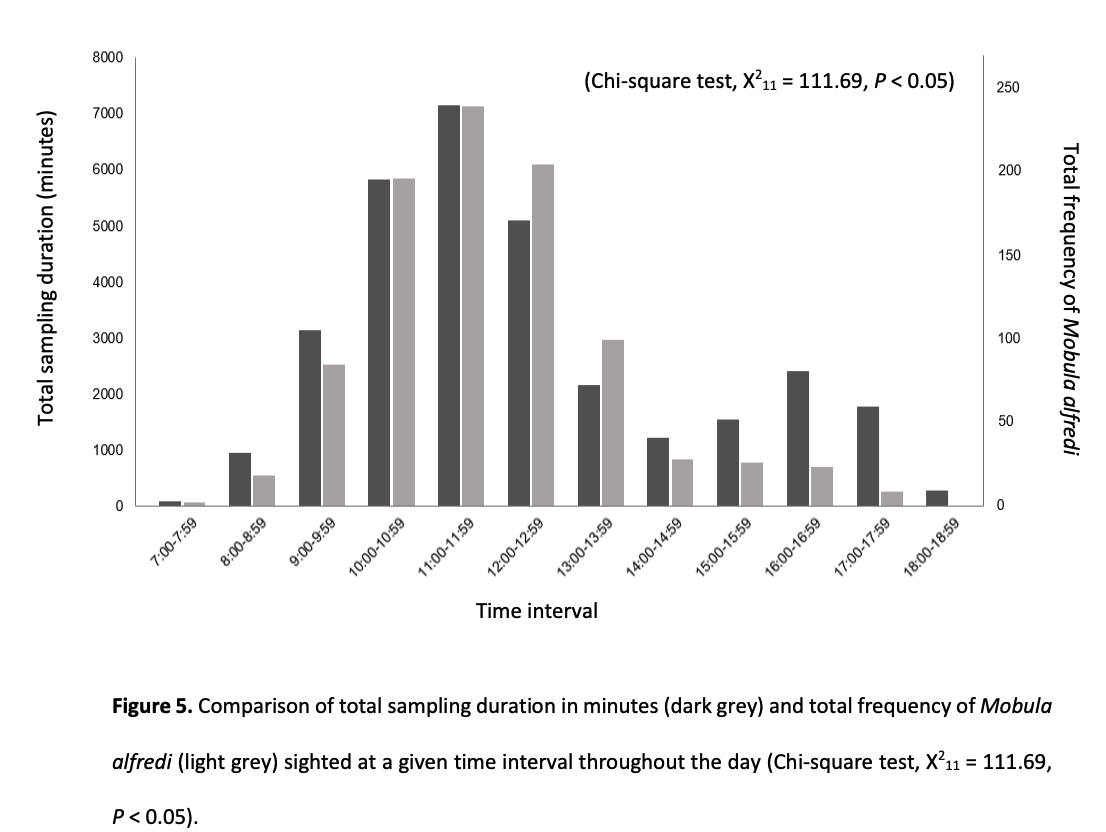
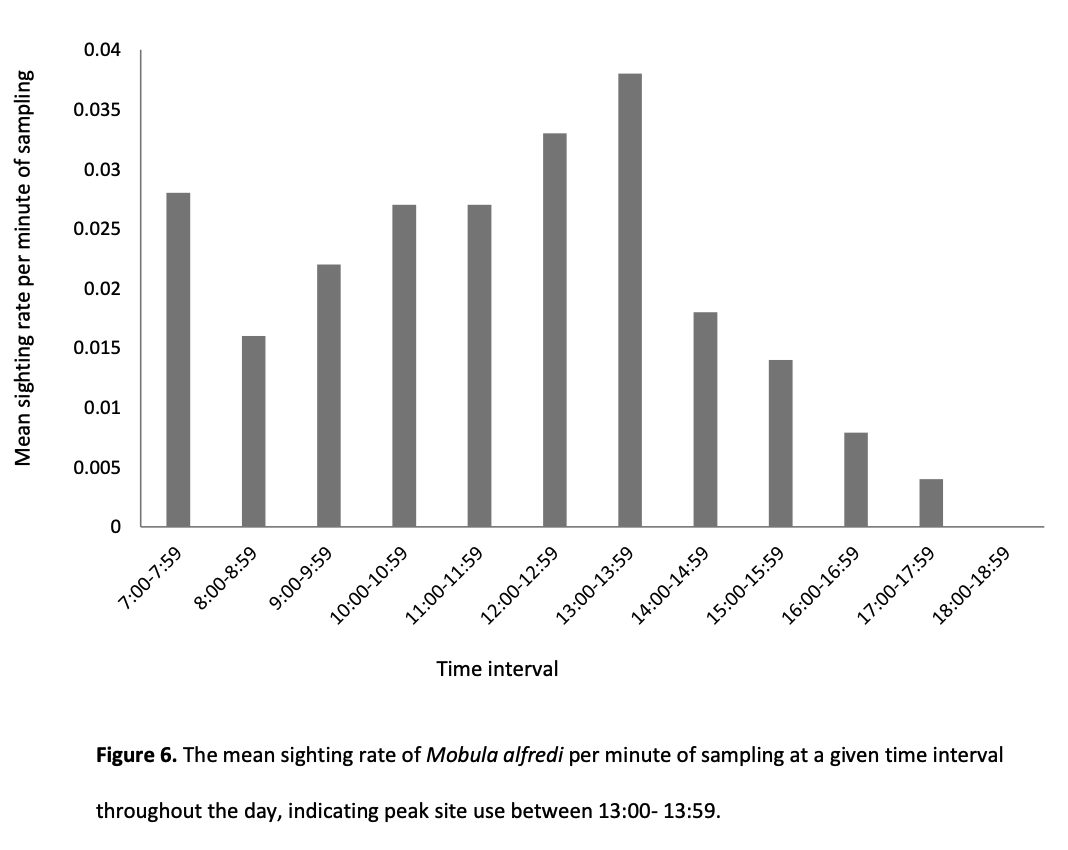
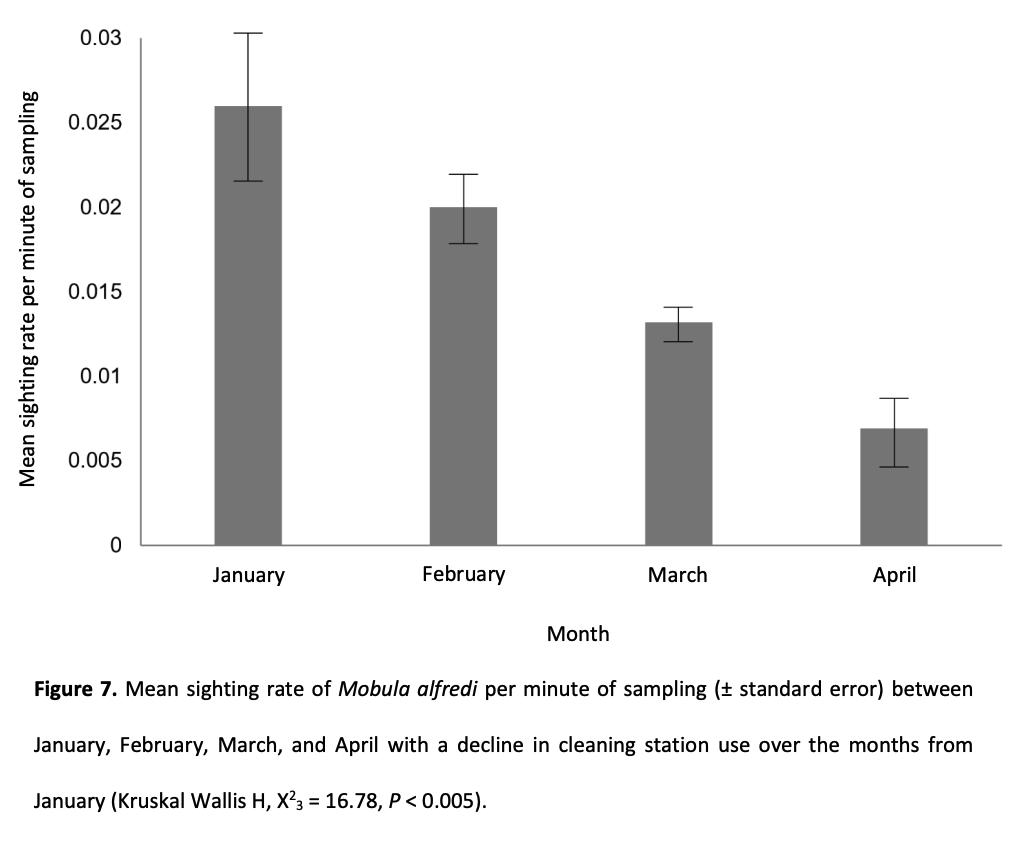
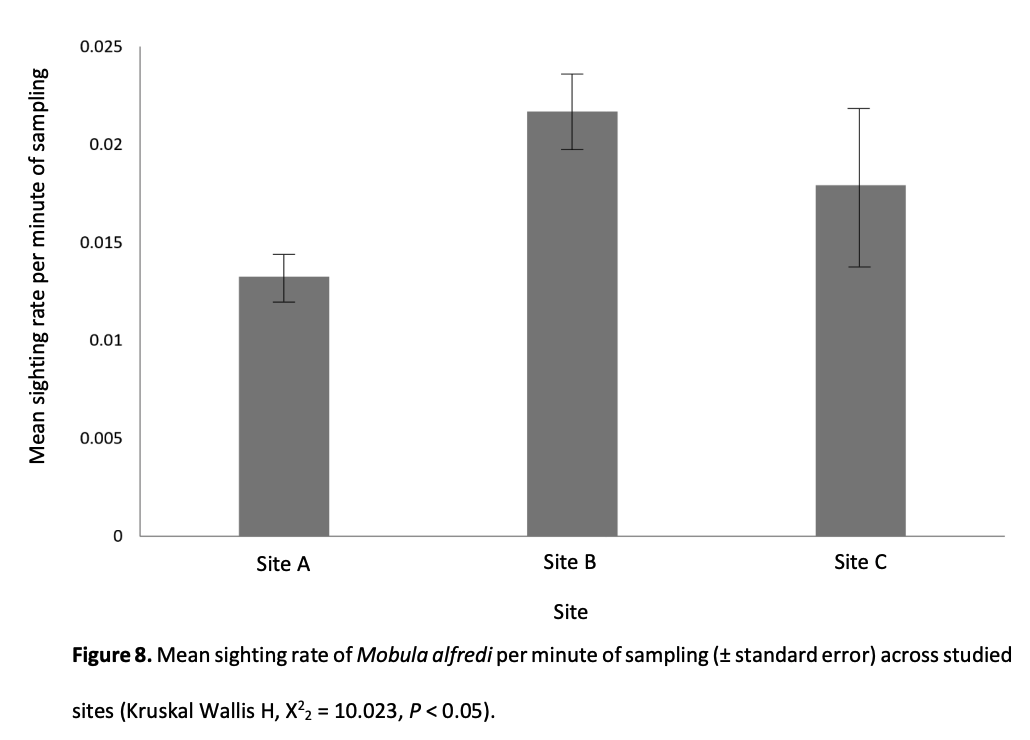
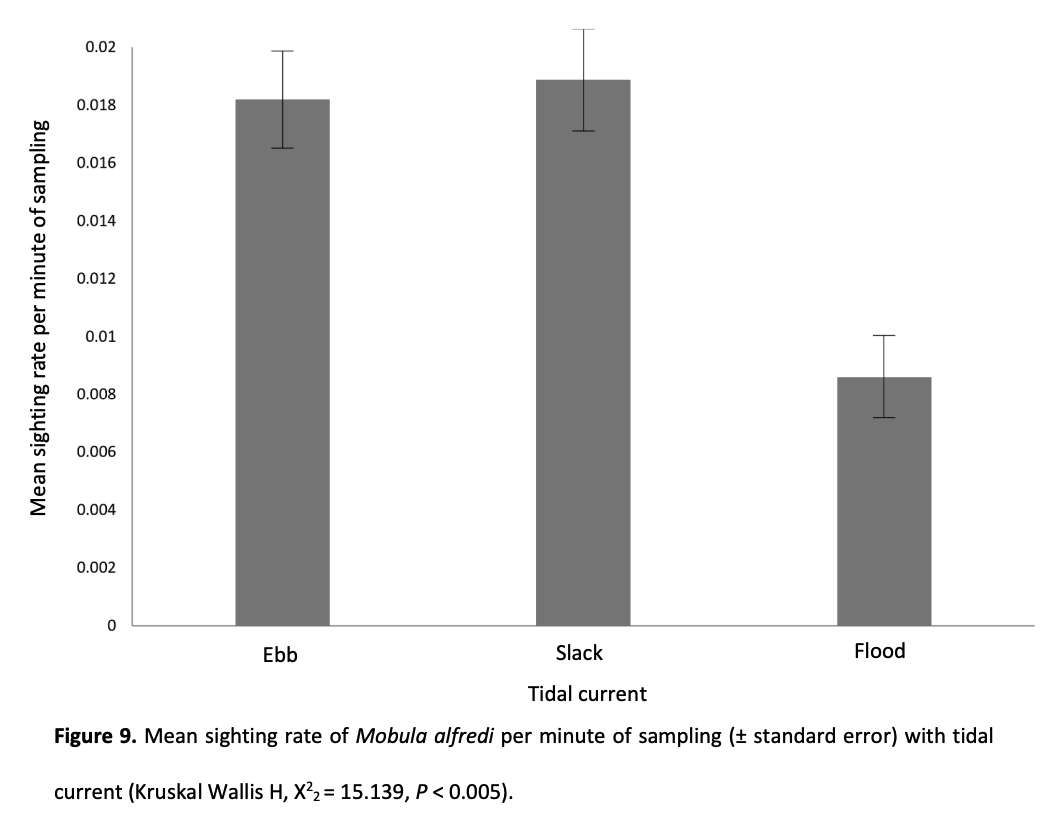
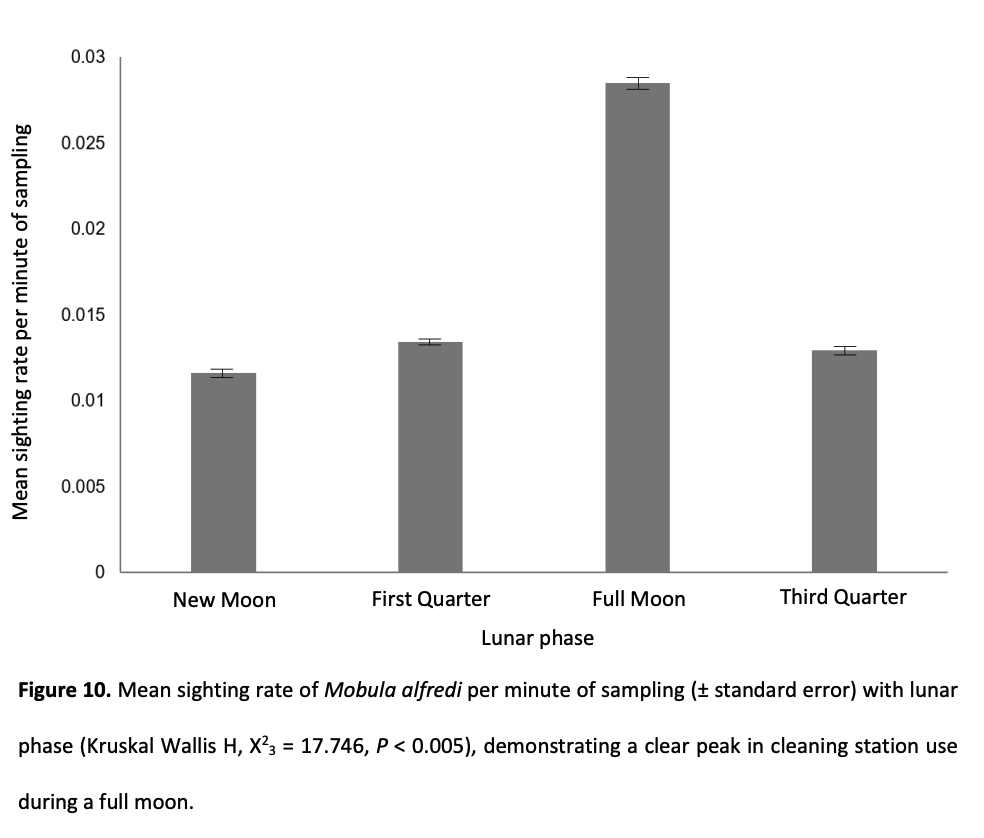
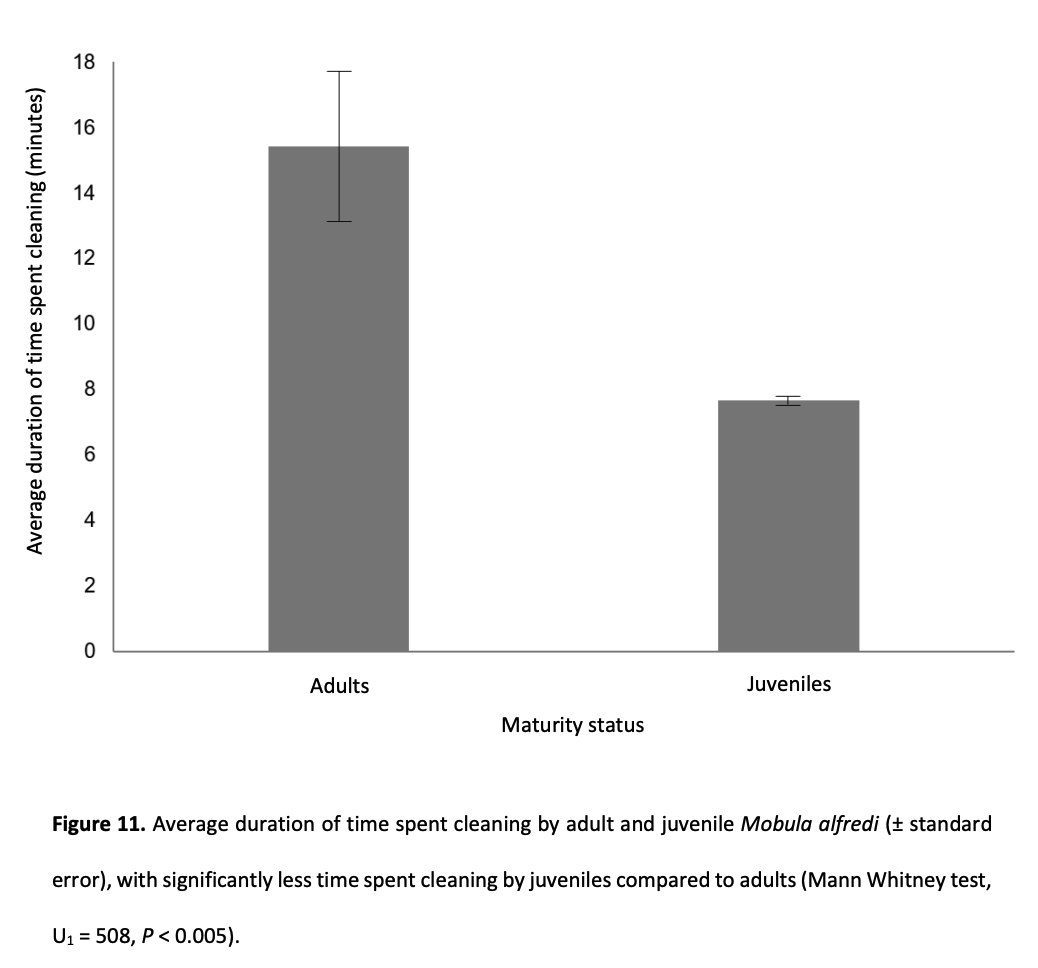
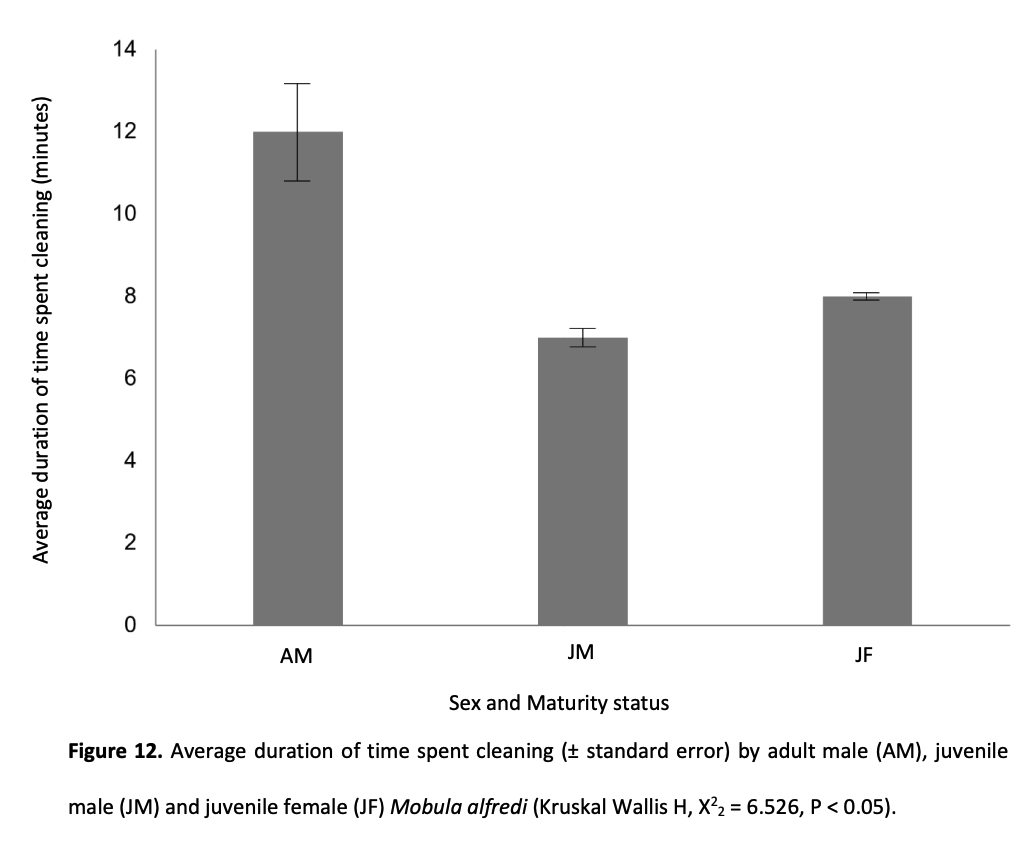
Summary: Mobula alfredi (reef manta rays) face rapid and persistent declines due to human threats. To protect them effectively, understanding their fine-scale habitat use is crucial. This study used remote underwater video systems to investigate cleaning stations' importance and environmental factors influencing M. alfredi presence in western Raa Atoll, Maldives. Results show high residency and site fidelity, with juvenile manta rays showing a stronger affinity for cleaning stations. Lunar phase, month, and tidal current influenced visitation, suggesting a link between cleaning and feeding. RUVs offer valuable insights for conservation planning and further research in other regions.
Abstract
“Mobula alfredi (reef manta rays) continue to undergo rapid and persistent declines driven by pervasive anthropogenic threats. To provide effective conservation measures, a better understanding of their fine-scale habitat use is required, to identify critical aggregation sites and environmental drivers behind M. alfredi presence in these areas. In this study, remote underwater video systems (RUVs) were used in conjunction with abiotic environmental data and a photo-identification database to investigate small-scale habitat use and cleaning duration of adult and juvenile M. alfredi at three cleaning stations on western Raa Atoll, Maldives during the northeast monsoon between 2020 and 2022. Results are based on findings from 98 individuals identified from 470 sightings during daylight hours. Repeat sightings indicated high residency and site fidelity of both adult and juvenile M. alfredi at cleaning stations demonstrating the importance of these key aggregation areas. Coincident with previous studies, visitation by M. alfredi to cleaning stations was influenced by month, lunar phase, and tidal current. These environmental cues are known to affect prey availability to M. alfredi by providing temporally limited foraging opportunities, indicating cleaning activities may be linked to feeding in M. alfredi. The present study provides compelling evidence that juvenile M. alfredi have a stronger affinity for these cleaning stations than adults, suggesting immature individuals may be more susceptible to anthropogenic threats in this area. Juvenile M. alfredi cleaned for markedly shorter durations than adults, indicating larger individuals require more intense cleaning. These findings demonstrate RUVs can provide valuable insights into the temporal and behavioural visitation patterns of M. alfredi to cleaning stations. The results presented here provide baseline information on M. alfredi that can be used to inform marine spatial planning of conservation intervention programmes. This incites the need for further research to evaluate small-scale habitat use of key aggregation sites to assist conservation planning to provide protection for M. alfredi in other regions.”
Author Affiliations
University of Exeter
The Manta Trust
